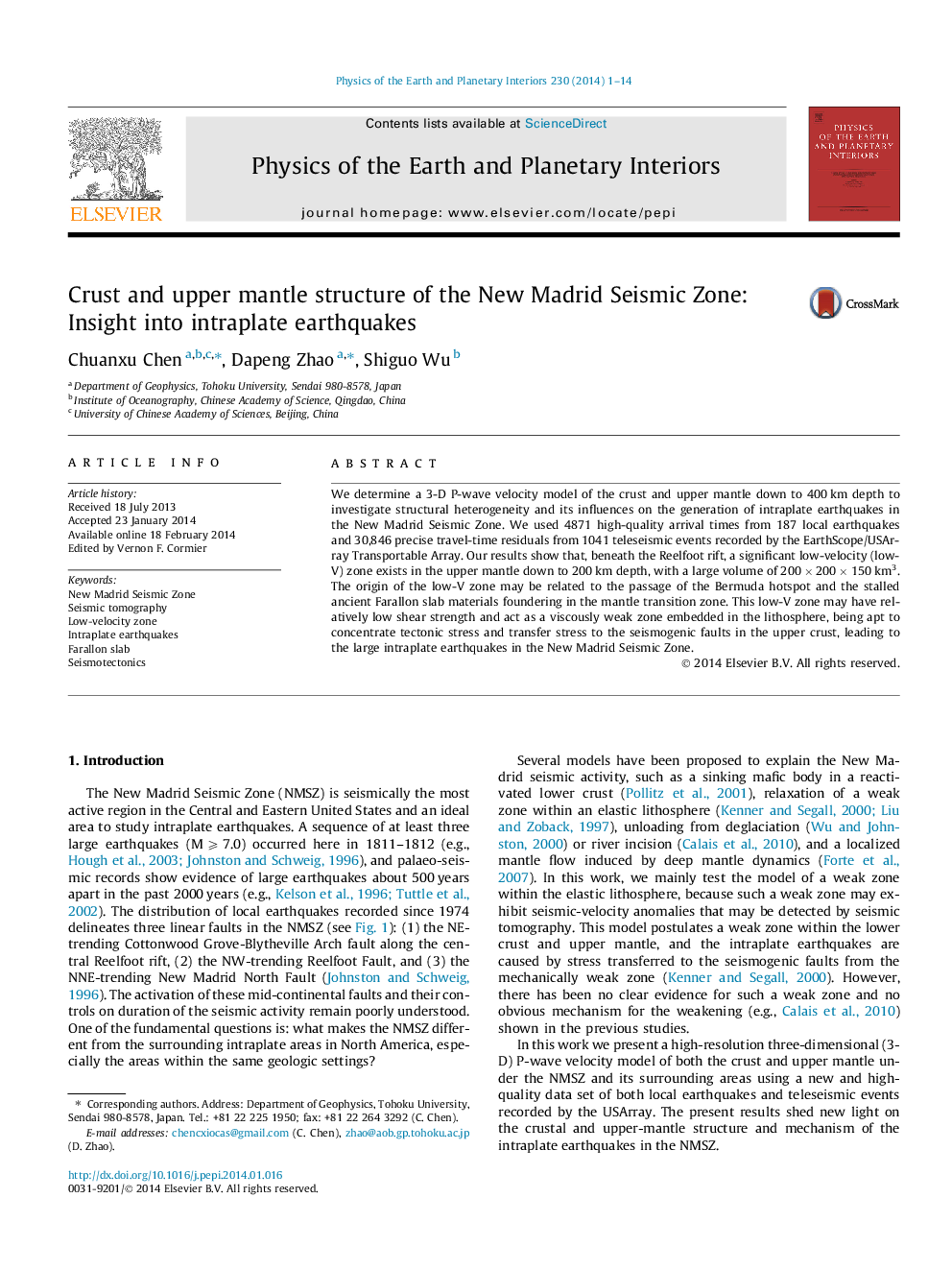| Article ID | Journal | Published Year | Pages | File Type |
|---|---|---|---|---|
| 4741558 | Physics of the Earth and Planetary Interiors | 2014 | 14 Pages |
•Tomography down to 400 km depth under New Madrid Seismic Zone (NMSZ) is obtained.•A prominent low-velocity zone (LVZ) exists in the lithosphere under NMSZ.•The LVZ can concentrate tectonic stress and transfer stress to seismogenic faults.•NMSZ is related to the structural heterogeneity in the crust and upper mantle.
We determine a 3-D P-wave velocity model of the crust and upper mantle down to 400 km depth to investigate structural heterogeneity and its influences on the generation of intraplate earthquakes in the New Madrid Seismic Zone. We used 4871 high-quality arrival times from 187 local earthquakes and 30,846 precise travel-time residuals from 1041 teleseismic events recorded by the EarthScope/USArray Transportable Array. Our results show that, beneath the Reelfoot rift, a significant low-velocity (low-V) zone exists in the upper mantle down to 200 km depth, with a large volume of 200 × 200 × 150 km3. The origin of the low-V zone may be related to the passage of the Bermuda hotspot and the stalled ancient Farallon slab materials foundering in the mantle transition zone. This low-V zone may have relatively low shear strength and act as a viscously weak zone embedded in the lithosphere, being apt to concentrate tectonic stress and transfer stress to the seismogenic faults in the upper crust, leading to the large intraplate earthquakes in the New Madrid Seismic Zone.
